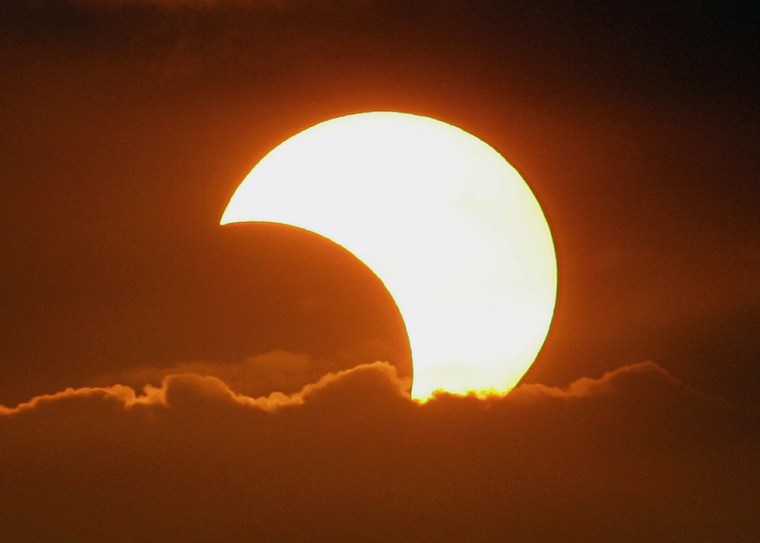Indonesians were among the few worldwide to witness an eclipse of the sun Monday, some cheering and banging on drums as the moon slowly crossed its path, blocking out everything but a thin, blazing rim of fire.
Dozens gathered in the western coastal town of Anyer to see the spectacle, which peaked at 4:40 p.m. local time and lasted for about four minutes.
“I’m old, but I still think this is magical,” said Roanna Makmur, 66, who drove several hours with eight friends to witness the sight, known as an annular eclipse, because it does not completely black out the sun.
“I can’t help but feel the greatness of God,” she said, as fellow onlookers applauded and then fell silent. “Anyone who passed up this opportunity, really missed out.”
Annular eclipses, which are considered far less important to astronomers than total eclipses of the sun, occur about 66 times a century and can be viewed only by people in the narrow band along its path.
Aside from several regions in Indonesia — from Sumatra island in the west to Kalimantan in the east — only villagers on a tiny South Pacific island group known as the Cocos could see Monday’s eclipse, said Jay Pasachoff, professor of astronomy at Williams College in Williamstown, Massachusetts. He is also a chair of the International Astronomical Union’s Working Group on Eclipses.
But a partial eclipse — with coverage ranging from 1 percent to 84 percent of the sun’s diameter — was visible in the southern third of Africa, in southeastern India and Southeast Asia, as well as the western part of Australia.
Hundreds turned out in Indonesia’s Samarinda, the capital of East Kalimantan province, where more than 90 percent of the sun’s diameter was covered. Some ignored danger warnings and looked directly at the sun. Others wore sunglasses to protect their eyes or looked at its reflection in buckets of water.
“We are so happy we were able to see this,” said Fauziah Sulaiman, a mother of two, who was standing outside her house. “It’s great for the children, especially after learning about it in school.”
The last total eclipse of the sun was Aug. 1, 2008, and was visible in Canada, across northern Greenland, the Arctic, central Russia, Mongolia and China.
The next total solar eclipse will occur on July 22 and will be visible in India, Nepal, Bangladesh, Bhutan, Myanmar, China and some Japanese islands.
